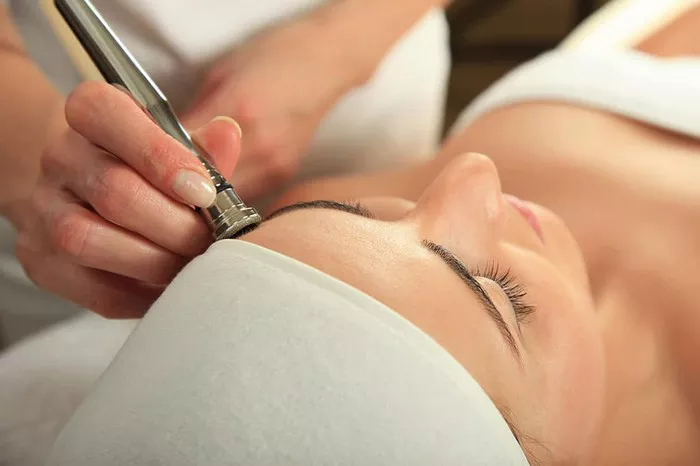Microdermabrasion, a popular cosmetic procedure designed to rejuvenate the skin, often leaves individuals curious about the duration of redness following the treatment. In this comprehensive guide, we will explore the intricacies of microdermabrasion, its effects on the skin, and the factors influencing post-treatment redness. From the science behind microdermabrasion to practical insights on recovery, this guide aims to provide a thorough understanding of how long redness may persist and strategies to optimize the healing process.
Understanding Microdermabrasion
Microdermabrasion is a non-invasive cosmetic procedure that exfoliates and revitalizes the skin by using a specialized device to gently sand away the outer layer of skin cells. This process promotes cell turnover, stimulates collagen production, and addresses concerns such as fine lines, uneven skin tone, and mild acne scars. Microdermabrasion can be performed by skincare professionals or with at-home devices, offering individuals a range of options to achieve smoother and more radiant skin.
The Redness Conundrum: Why Does It Occur?
Redness is a common side effect of microdermabrasion, and its occurrence is linked to the mechanical exfoliation and stimulation of blood flow during the procedure. The skin’s response to the removal of the outermost layer includes increased circulation and a temporary dilation of blood vessels, leading to a flushed or red appearance. While redness is a normal and expected outcome, its duration varies among individuals and can be influenced by factors such as skin sensitivity, the intensity of the procedure, and individual healing capabilities.
How Long Does Microdermabrasion Cause Redness?
The duration of redness following microdermabrasion is typically short-lived, with most individuals experiencing redness for a few hours up to one day post-treatment. The intensity of redness can vary, ranging from a subtle flush to a more pronounced hue, depending on individual skin characteristics and the aggressiveness of the procedure.
In some cases, individuals may notice lingering pinkness for an additional day or two, particularly if they have sensitive skin or underwent a more intensive microdermabrasion session. However, persistent redness beyond this timeframe is uncommon and may indicate an adverse reaction or the need for adjustments in post-treatment care.
Factors Influencing Redness Duration
Several factors contribute to the duration and intensity of redness following microdermabrasion. Understanding these factors can help individuals anticipate and manage the post-treatment effects:
Skin Sensitivity: Individuals with sensitive skin are more prone to experiencing heightened redness after microdermabrasion. Skincare professionals often tailor the intensity of the procedure based on individual skin types to minimize adverse reactions.
Microdermabrasion Intensity: The aggressiveness of the microdermabrasion treatment, including the depth of exfoliation and the strength of suction, can influence redness. Deeper and more intensive treatments may result in increased redness that takes longer to subside.
Pre-existing Skin Conditions: Individuals with pre-existing skin conditions, such as rosacea or eczema, may experience prolonged redness after microdermabrasion. Skincare professionals consider these conditions when customizing treatments to avoid exacerbating skin sensitivity.
Post-Treatment Care: Proper post-treatment care plays a significant role in minimizing redness and supporting skin recovery. Following the recommended skincare routine, avoiding sun exposure, and using gentle, hydrating products contribute to a smoother healing process.
Optimizing Recovery
While redness is a normal part of the microdermabrasion recovery process, individuals can take proactive steps to minimize its intensity and duration. Consider the following tips for optimizing recovery:
Follow Post-Treatment Instructions: Adhere to the post-treatment instructions provided by your skincare professional or the product guidelines for at-home microdermabrasion devices. These instructions often include specific recommendations for cleansing, moisturizing, and sun protection.
Use Gentle Skincare Products: Choose mild and hydrating skincare products in the days following microdermabrasion. Avoid harsh exfoliants, strong acids, and potentially irritating ingredients that may exacerbate redness.
Apply a Soothing Moisturizer: Moisturizing is essential for supporting skin recovery. Opt for a soothing and hydrating moisturizer to alleviate dryness and minimize redness.
Avoid Sun Exposure: Protect your skin from direct sunlight in the days following microdermabrasion. Sun exposure can worsen redness and increase the risk of post-inflammatory hyperpigmentation. Use sunscreen with adequate SPF and reapply as needed.
Stay Hydrated: Drink plenty of water to maintain skin hydration from within. Hydrated skin is more resilient and recovers more efficiently from cosmetic procedures.
Consider Cool Compresses: If redness is more pronounced, applying a cool compress to the treated area can help soothe the skin and reduce inflammation. Be sure to use a clean and soft cloth to avoid irritation.
When to Seek Professional Guidance
While mild redness is expected after microdermabrasion, certain signs may indicate the need for professional guidance. If you experience any of the following, consider reaching out to your skincare professional:
Persistent or Worsening Redness: If redness persists beyond the expected timeframe or worsens over time, consult your skincare professional to rule out any adverse reactions or complications.
Excessive Discomfort: Mild discomfort or tightness is normal after microdermabrasion, but severe pain or burning sensations may indicate an issue that requires attention.
Unusual Skin Reactions: If you notice unusual changes in skin texture, such as blistering, peeling, or the development of hives, seek immediate professional evaluation.
Infection Signs: Symptoms of infection, such as increased redness, swelling, warmth, or the presence of pus, should be addressed promptly to prevent complications.
Conclusion
In conclusion, microdermabrasion is a valuable tool in the realm of skincare, offering a non-invasive means of rejuvenating the skin. While redness is a common and temporary side effect of the procedure, its duration is typically short-lived, with most individuals experiencing relief within a day or two.
Understanding the factors influencing redness, optimizing recovery through proper post-treatment care, and knowing when to seek professional guidance empower individuals to navigate the microdermabrasion process with confidence. By incorporating these insights into their skincare journey, individuals can harness the benefits of microdermabrasion while minimizing the impact of post-treatment redness, revealing a refreshed and revitalized complexion.


